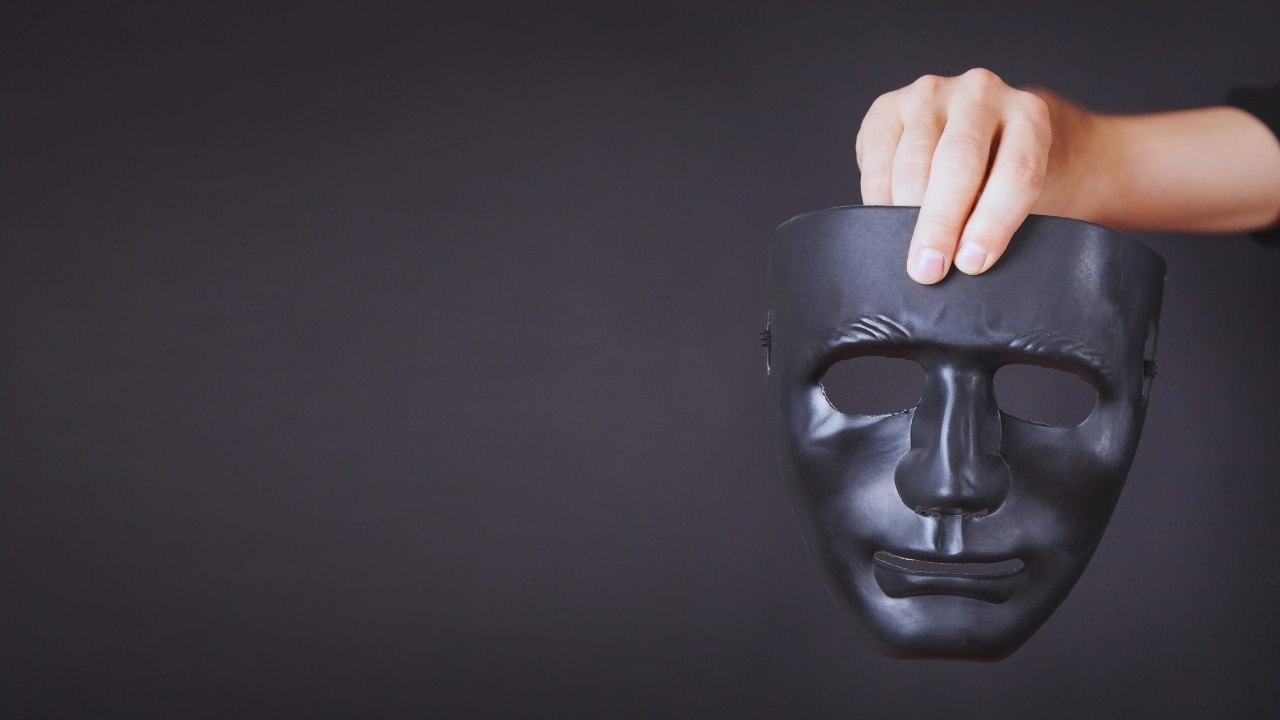
Post by : Anish
“Deepfakes” refer to media—video, audio, images—that are synthetically generated or altered using artificial intelligence techniques to make false content appear real. Initially, they relied on face swaps or crude voice mimicry, but over time they have grown far more convincing. Thanks to advances in machine learning architectures like GANs (Generative Adversarial Networks), diffusion models, and multimodal systems, modern deepfakes can render not only facial features but voice, accent, emotional tone, lighting, shadows, and environment context in a startlingly realistic way.
Where earlier deepfakes required large datasets, heavy computing, and substantial technical expertise, today’s versions can be produced with minimal data and widely accessible tools. A small snippet of voice or image can serve as training material to generate full scenes. This democratization has accelerated misuse, blurring the lines between what is authentic and what is artificial.
One of the most dangerous facets of deepfakes is how fast they can be created and spread. A fake video or audio clip can go viral before fact-checkers or verification systems can catch it. In breaking news scenarios, false content seeded early often frames narratives, making retractions or corrections less effective.
As deepfakes proliferate, they threaten to erode public confidence in authentic media. People may begin to dismiss legitimate evidence as “just another manipulation.” This phenomenon, sometimes called the “liar’s dividend,” enables bad actors to deflect accountability. Even truthful content may be questioned if the possibility of synthetic imitation looms large.
Deepfakes are now employed in high-stakes realms: manipulating electoral narratives, impersonating public figures, inciting unrest, or executing financial fraud. Impersonated voices of executives have tricked organizations into authorizing large transfers. Politically sensitive deepfake videos can inflame tensions or discredit leaders. The toolset is increasingly wielded as a weapon in modern information warfare.
Modern attacks often combine deepfake video, audio, synthesized documentation, and social engineering — making detection harder. In some cases, victims have been convinced by a synthesized voice, backed up by manipulated footage and fabricated textual evidence. These multimodal schemes dramatically raise the stakes of misinformation.
Deepfake fraud has exploded in financial sectors. Reports indicate that voice fraud in contact centers rose by hundreds of percent year-over-year, illustrating how synthetic voices are being used to extract sensitive information or funds.
Surveys of organizations reveal that a large majority now report having faced deepfake attacks, yet many lag in deploying protective measures or investing sufficiently in defenses.
Governments and regulators are sounding alarms. Nations are introducing or proposing laws to ban or penalize the nonconsensual creation and distribution of deepfake media, especially when used for harassment, fraud, or misinformation.
On the technology front, detection tools are becoming arms in an escalating arms race between creation and defense. Advanced techniques like zero-shot detection (which aims to catch fakes the system has never seen before) are entering the mix.
Market data shows that the deepfake detection industry is booming. Projections suggest steep compound annual growth rates, as demand rises for tools that can verify the authenticity of media.
In some countries, new platforms are emerging to help detect synthetic content. For instance, India has launched a cloud-based deepfake detection solution designed to analyze voices, video, and images in real time.
These developments underscore that deepfakes are no longer speculative threats — they are active, evolving, and deeply embedded in the information ecosystem.
Static detection systems struggle with newer deepfakes they haven’t seen before. Thus, newer approaches rely on adaptive or continual learning, where detection tools constantly retrain to recognize emerging synthetic patterns. Techniques such as transformer models, meta learning, and fingerprinting of generative model artifacts are being explored.
One promising frontier is zero-shot detection, which aims to identify fake content without previously training on that exact type of manipulation. Research is exploring self-supervised learning, adversarial perturbations, and hybrid approaches combining image, audio, and textual signals. Such tools could flag novel fakes as they emerge rather than after threats are known.
Because deepfakes increasingly combine visuals, audio, and other cues, detection is also shifting toward fusion models that analyze multiple modalities together. Cross-checks between lip movement and audio, inconsistencies in reflections, metadata clues, and temporal irregularities all serve as redundancies in catching fakes.
Preventive measures include embedding digital watermarks or cryptographic signatures at the source of content creation. Metadata provenance tools attempt to trace the origin of media, showing whether it has been modified. Some detection systems insert invisible “fingerprints” in legitimate media to help authenticate later.
Major content platforms are under pressure to integrate authenticity checks before content is widely distributed. Pre-upload scanning, flagged content layers, or authenticity badges can help slow the spread of synthetic media. Some platforms are experimenting with requiring disclosure when AI has been used in generation.
Many jurisdictions are enacting or considering laws targeting nonconsensual or harmful deepfake content. One law in the U.S. requires platforms to remove nonconsensual intimate content generated by AI. Other bills aim to penalize synthetic impersonation used for fraud or defamation. Such legal guardrails become essential in deterring misuse.
Effective defense also depends on well-informed users. Media literacy programs aim to teach how to spot red flags — odd lighting, mismatched lip sync, unnatural pauses, or inconsistencies in shadows. Organizations increasingly simulate deepfake attacks as training to raise awareness among employees and the public.
For every improvement in detection, deepfake generation techniques evolve to evade it. Attackers adopt adversarial strategies, new architectures, or orchestration tactics to bypass known filters. This cat-and-mouse arms race is likely to intensify.
Detection systems must balance accuracy with real-time performance. Flagging every suspicious video or voice in large-scale social media environments is computationally expensive. False positives risk undermining trust; false negatives risk allowing damage.
The field lacks universally accepted benchmarks, data sets, and evaluation frameworks. Without standard measures, comparing detection tools or verifying claims is difficult. Uniform standards would help regulators, platforms, and developers collaborate more effectively.
Deepfakes often cross national boundaries. A synthetic video created in one country may be disseminated globally, complicating legal enforcement. Coordinated international treaties or agreements may be required.
Regulating deepfakes raises tricky questions about censorship, consent, and creative expression. Legitimate parody or satire could be unfairly censored. There is also tension between protecting individuals’ identity rights and preserving public discourse.
As deepfake fears rise, people may become overly skeptical of authentic media. Alternatively, constant alarms might lead to fatigue, where the public becomes desensitized. Balancing vigilance and skepticism is delicate.
Future deepfakes may integrate facial cues, voice, gestures, background interaction, and emotional texture in seamless, context-aware ways. The synthetic world will look and sound like real life—making detection even more complex.
Rather than detecting fakes after the fact, future defenses may intercede during the generation process. Real-time monitoring, adversarial perturbations, watermark insertion, or content vetting pipelines may reject manipulated content before it is published.
More nations will likely implement laws penalizing harmful deepfake creation and distribution. International coordination could yield treaties or standards for synthetic media. Platforms may be required to adopt baseline authenticity safeguards across markets.
The market for media authenticity tools is projected to expand rapidly. Demand will come from governments, media houses, legal firms, social platforms, banking, and security agencies. Improving reliability, explainability, and affordability will be key.
Regular users may get access to browser extensions or apps to validate media in real time. Verifying a video’s authenticity before resharing could become a standard practice—much like scanning for viruses or checking email headers.
Defending against deepfakes transcends pure technology. It demands cooperation among AI researchers, legal experts, ethicists, journalists, policymakers, and educators. Only a holistic approach can sustain resilience against synthetic manipulation.
Deepfake technology represents one of the most profound challenges to information integrity today. As synthetic media becomes indistinguishable from reality, the risks amplify — from political deception to financial fraud, from identity theft to social destabilization.
Yet, solutions are emerging. The combination of adaptive detection technologies, legal frameworks, platform-level responsibility, and public awareness offers a multipronged shield. The battle will be ongoing, and no single defense is sufficient. But by staying vigilant, evolving our tools, and cultivating trust, society can strive to preserve truth in a world susceptible to illusion.
Whether deepfakes end up defining the next era of fake news or simply catalyze a renaissance of media verification will depend on how quickly and wisely we respond.
This article is based on aggregated research, reports, and expert commentary as of mid-2025. It is provided for informational and analytical purposes only and does not constitute legal, technical, or professional advice.

Dubai Weekly Real Estate Snapshot: Off-Plan Leads, Remote Freehold Transactions
Dubai’s Week 41 sees AED 9.82 bn in property deals; 61.3% off-plan; new rule allows remote freehold

Dubai Becomes 2nd Most Sought After Residency for HNWIs
Dubai climbs as the 2nd most inquired-about residency among HNWIs, driven by Golden Visa, tax perks,

Lodha Gains Global Trust Recognition in Real Estate
Lodha is the only Indian real estate firm named among Newsweek’s 2025 “World’s Most Trustworthy Comp

Dubai Unveils “Dubai Live” — Real-Time AI Urban Command Hub
Dubai introduces “Dubai Live,” an AI-powered urban command hub that integrates real-time city servic

Dubai’s Real Estate Market Defies Seasonal Slowdown: Q3 2025 Surge
Dubai real estate bucks summer lull with 22.7% rise in residential sales and 31% surge in commercial

Prestige Unveils ₹2,000 Crore Residential Project in Mira Road, Mumbai
Prestige Group unveils “Prestige Garden Trails” in Mira Road with GDV ₹2,000 cr, 1,324 units, strong

India Climbing the Ranks: Sixth Globally in Branded Residences
India now ranks sixth globally in live branded residence projects, capturing 4% of global supply as

From Marathon to Mallathon Dubai’s Fitness Events Unite the City
Dubai’s marathons Mallathons and beach yoga turn streets malls and beaches into vibrant fitness hubs

Dubai’s Wellness Revolution Anti Aging Clinics and Luxury Longevity Retreats for the Elite
Discover how Dubai attracts wealthy travelers with luxury anti aging clinics longevity retreats and

Beyond Bling Dubai Designers Lead a Sustainable and Modest Fashion Revolution
Discover how Dubai’s new designers blend sustainability luxury and modesty creating a fresh eco frie

6 Easy Diet Tips to Fulfill Your Daily Protein Requirements Naturally
Discover 6 simple and effective diet tips to meet your daily protein needs naturally for better stre

7 Vegetarian Foods That Naturally Boost Muscle Growth & Strength
Discover 7 vegetarian foods packed with protein and nutrients to boost muscle growth strength and re

5 Delicious Protein Packed Lunch Box Recipes for Kids You Must Try
Try these 5 protein rich lunch box recipes for kids Healthy tasty and easy meals to keep your childr

Rice vs Pasta Discover Which Carb Rich Food is Healthier for Yo
Compare rice and pasta to find which carb rich food is healthier with benefits drawbacks and tips fo

Sherry Singh India’s First Mrs Universe 2025 Winner
Sherry Singh makes history as India’s first Mrs Universe 2025 inspiring women worldwide with her str